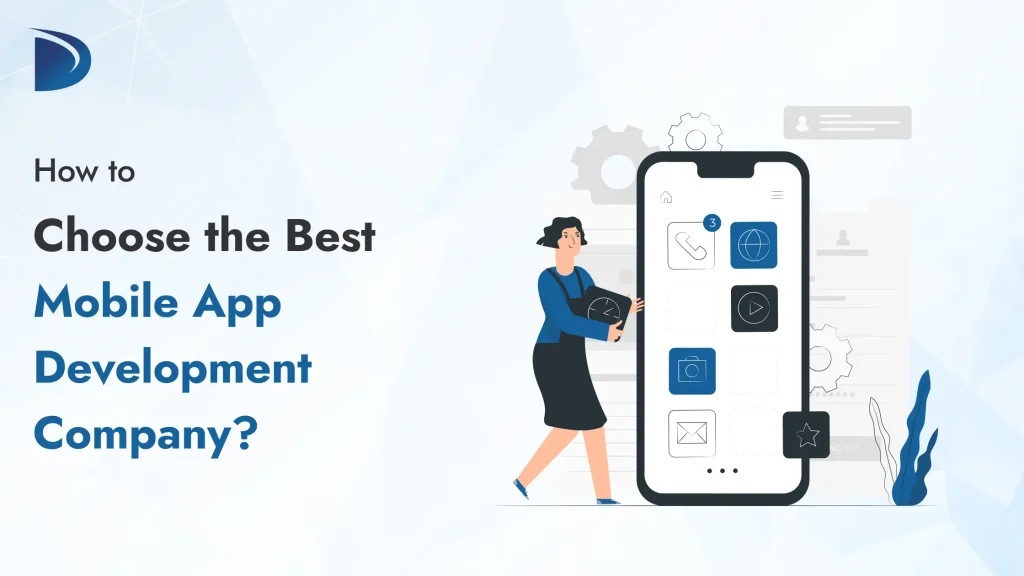Table of Contents
A mobile app can transform your business helping you reach more customers, strengthen loyalty, and expand your brand’s impact. But turning an idea into a successful app requires more than just coding skills. The most important step is how to choose a Mobile App Development Company as a partner with technical expertise, design creativity, and reliable communication.
Why Choosing the Right Partner Matters
The right app developer isn’t just a service provider they’re a strategic partner who will:
- Understand your goals and shape your app idea.
- Avoid technical pitfalls and deliver a scalable product.
- Provide ongoing support after launch.
Step 1: Define Your App’s Goals and Requirements
Before contacting companies, answer these questions:
- What problem will your app solve?
- Who is your target audience (young professionals, students, enterprises)?
- What platforms do you need (iOS, Android, or both)?
- What features are must-have (login, payments, chat, GPS, AI)?
- What is your timeline and budget range?
Tip: Write a project brief with goals, features, budget, and timeline. This makes it easier for companies to provide accurate proposals.
Step 2: Choose the Right App Type
- Native Apps (iOS/Android): Best performance, but higher cost.
- Cross-Platform Apps (Flutter, React Native): One codebase for both iOS & Android, faster and cheaper.
- Progressive Web Apps (PWAs): Web apps that look like native apps. Affordable but limited features.
- Web Apps: Simple, browser-based; best for basic needs.
*A good development partner will guide you on what suits your goals.
Step 3: Research and Shortlist Companies
Start with:
- Trusted directories: Clutch, GoodFirms, DesignRush.
- Recommendations from peers.
- Industry events or LinkedIn groups.
Look for:
- A professional website with service details.
- Portfolio of apps similar to yours.
- Reviews/testimonials highlighting reliability & communication.
- Industry experience (e.g., healthcare, fintech, e-commerce).
Step 4: Check Technical Skills and Team
Ask about expertise in:
- Languages & frameworks: Swift, Kotlin, Flutter, React Native.
- Backend: APIs, databases, cloud services.
- UI/UX design: Clean, user-friendly apps.
- Testing: Dedicated QA team.
Also confirm team roles (project manager, developers, designers, testers).
Step 5: Review Portfolios & Case Studies
Download and test their apps. Ask for case studies showing how they solved challenges, met deadlines, and handled scaling.
Step 6: Verify Reviews & Client References
- Look for ratings above 4.5 stars.
- Read detailed reviews on Clutch/GoodFirms.
- Speak with past clients to validate communication and support.
Step 7: Understand Their Development Process
Good companies use Agile/Scrum for flexibility and faster iterations. Ask:
- How will progress be reported?
- Which tools will they use (Jira, Trello, Slack)?
- Who is your main contact?
Step 8: Confirm Post-Launch Support
Ask:
- How do they handle bug fixes?
- Do they update apps for iOS/Android versions?
- How quickly do they respond?
- What’s included in maintenance contracts?
Step 9: Discuss Costs & Contracts
Typical costs:
- Simple app → $5,000 – $20,000
- Medium app → $20,000 – $80,000
- Complex app → $100,000+
Check that contracts clearly state:
- Source code ownership.
- Timelines & milestones.
- Payment terms.
- Post-launch support scope.
Step 10: Evaluate Communication & Transparency
Good communication is non-negotiable. Watch for:
- Fast response times.
- Clear, jargon-free explanations.
- Honest timelines (avoid “too good to be true” promises).
Step 11: Location & Time Zone Considerations
- Local companies: Easier meetings, higher costs.
- Offshore: Affordable but requires excellent remote collaboration.
- Nearshore: Balance of cost and communication.
Freelancer vs. Development Company
- Freelancer: Cheaper, good for small/simple apps, but risk of delays or lack of long-term support.
- Company: Better for complex apps, full teams (design + dev + QA), structured processes, reliable support.
Common Mistakes to Avoid
- Choosing the cheapest option without checking quality.
- No clear scope or NDA before signing.
- Ignoring post-launch maintenance.
- Rushing into contracts without references.
Conclusion
Choosing the right mobile app development company is one of the most important steps in your app journey. Define your needs, research carefully, evaluate skills and communication, and prioritize long-term reliability.
With the right partner, you’ll have not just an app but a scalable, user-friendly product that grows your business.
FAQs
Do I really need a mobile app for my business?
Not every business needs one. But if you want to improve customer engagement, build loyalty, or offer services on the go, an app can give you a competitive edge.
How do I know if an app developer is reliable?
Check their portfolio, client reviews, communication style, and post-launch support policies. Ask for references before signing a contract.
How much does it cost to develop a mobile app in 2025?
Simple app: $5,000–$20,000
Medium app: $20,000–$80,000
Complex app: $100,000–$300,000+
Always request a detailed cost breakdown.
Should I hire a freelancer or a company?
Freelancer → Cheaper, good for small projects.
Company → Safer for complex apps, offers a full team, structured processes, and long-term support
How long does it take to build a mobile app?
Simple: 2–4 months
Medium: 4–6 months
Complex: 6–12+ months
Which is better: Native, Cross-Platform, or PWA?
Native → Best performance & features, higher cost.
Cross-Platform → Cost-effective for iOS + Android.
PWA → Affordable, fast, limited functionality.
What questions should I ask before hiring a developer?
Have you built apps like mine?
What’s your process (Agile, Scrum)?
Who owns the source code?
How do you handle post-launch support?
How do I protect my app idea?
Sign an NDA.
Ensure IP rights are in your contract.
Work with trusted, verified companies.

